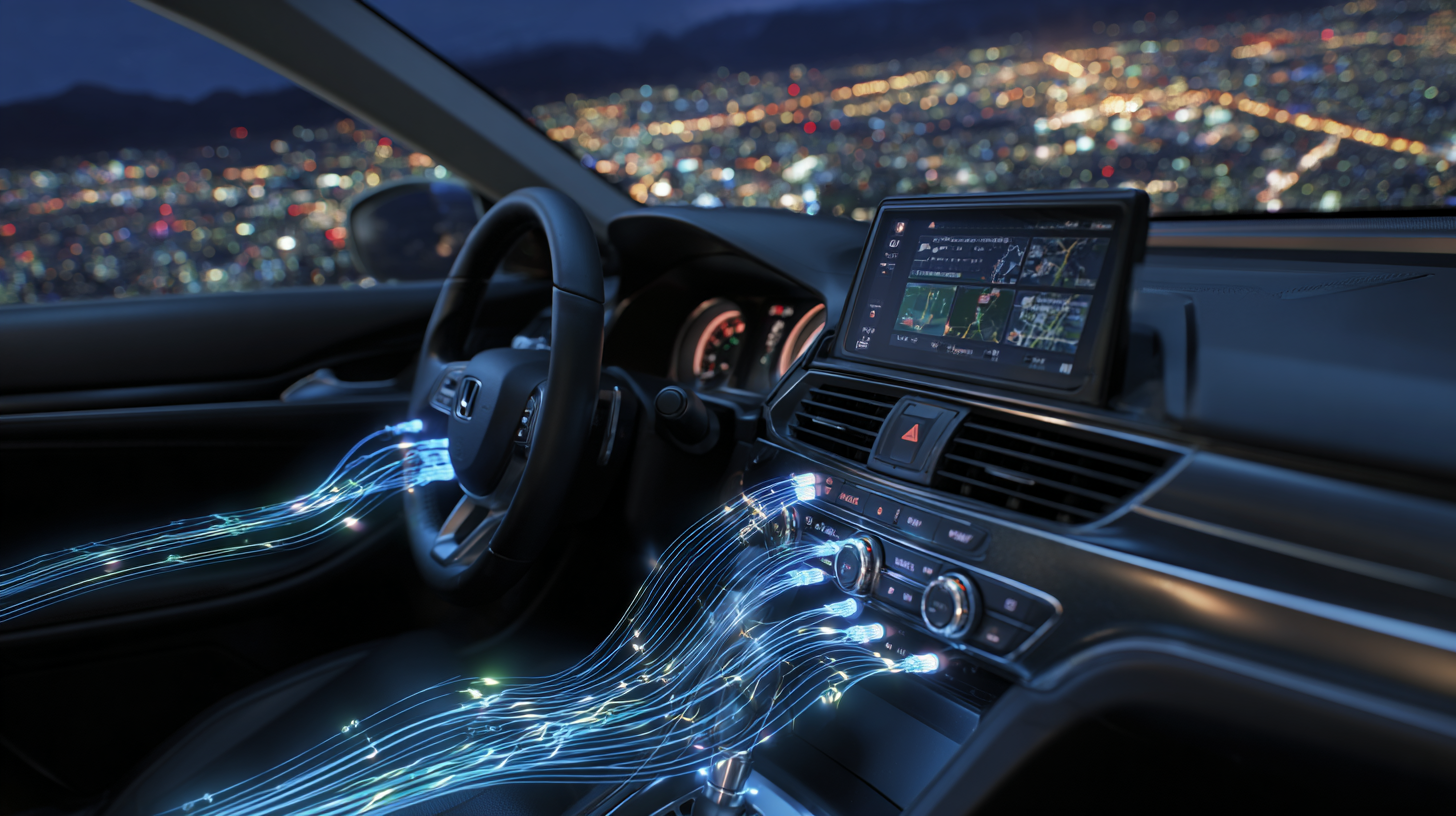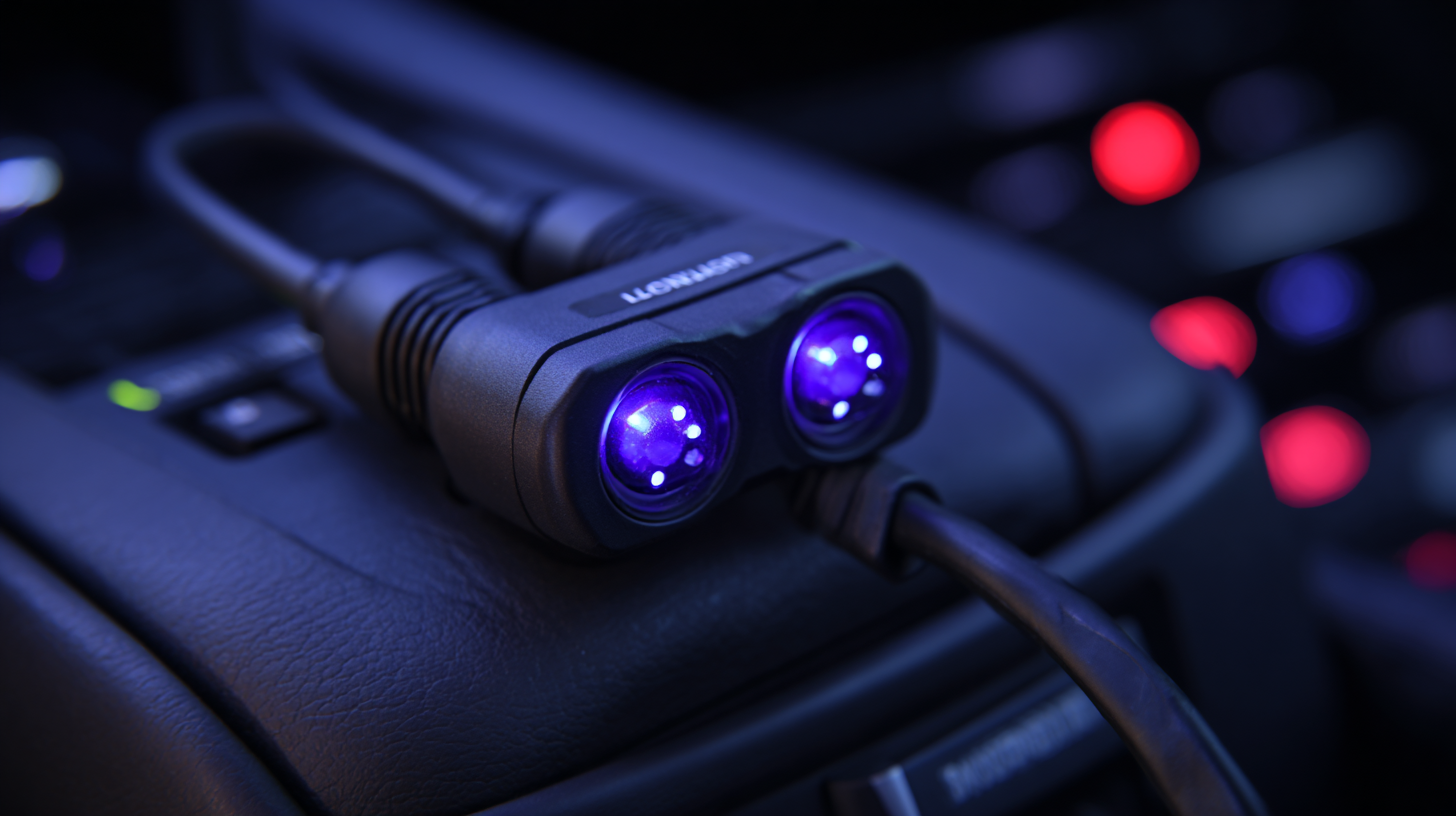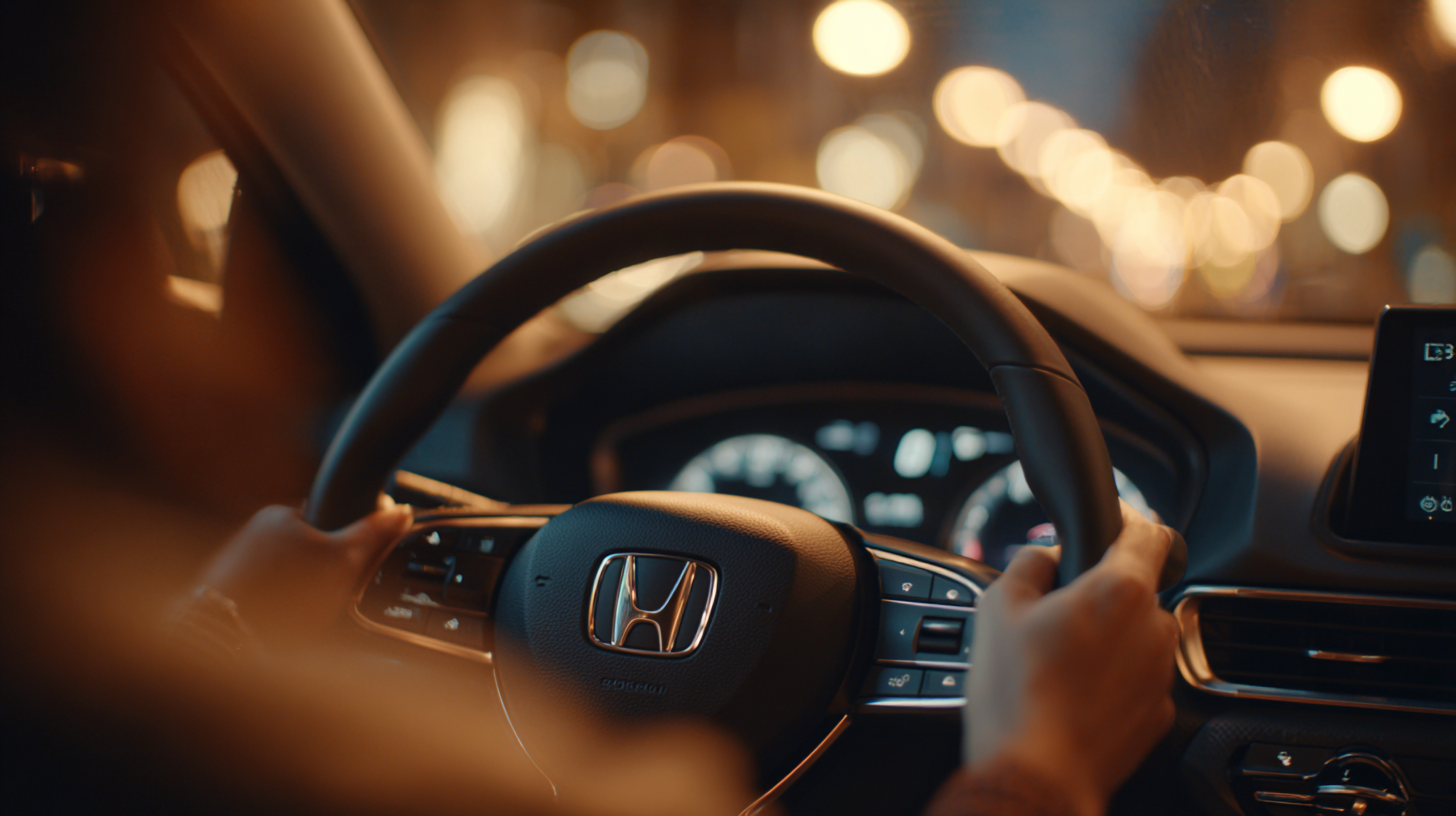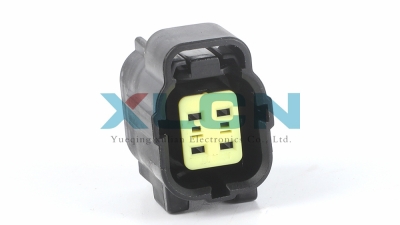The Future of Connectivity with Honda Connectors
Table of Contents
- Challenges in Achieving Seamless Integration with Honda Connectors
- Common Connectivity Issues Observed in Honda Vehicles
- Innovative Solutions for Enhancing Honda Connector Performance
- Future Trends in Honda Connector Technology and Connectivity
- User Experiences and Troubleshooting Honda Connectivity Problems
- Enhancing Connectivity with Sealed Sensor Connector SSC System Series: A Comprehensive Overview
- FAQS
- Related Posts
As the automotive world keeps changing and advancing, it’s more important than ever to focus on connectivity — especially with people wanting more innovative features in their cars. Honda Connectors are right at the heart of this shift, helping different electronic parts within vehicles talk to each other smoothly. I recently came across a market report saying that the global automotive connectors market could hit around USD 31.5 billion by 2026. That growth is driven by newer automotive tech and the increasing number of electric vehicles on the road. Yueqing Xulian Electronics Co., Ltd. is really leading the charge here, focusing on top-notch automotive connectors, ECU connectors, wiring harnesses, and other related accessories. Their goal is to combine manufacturing, R&D, and innovation to stay ahead of what the auto industry needs — especially when it comes to making Honda Connectors better, more reliable, and more functional.

Challenges in Achieving Seamless Integration with Honda Connectors
Hey, so the car industry is really going through some big changes lately, especially when it comes to connectivity stuff. You know, those new connector systems in the latest cars are pretty much essential if we want everything to work smoothly with outside tech. But, man, there are still some hurdles to jump over. One of the trickiest parts is making sure all these different powertrain systems can play nicely together, especially now that so many manufacturers are jumping on the electric bandwagon. For example, trying to fit new electric motors with the existing battery-swapping setups takes a lot of careful planning and testing. Otherwise, you risk messing things up and causing disruptions, and nobody wants that.
On top of that, big industry players are working together to tackle issues around EV charging grids. It really shows how important it is to come up with standardized practices for connectors — otherwise, it’s just gonna be chaos. And interestingly, more than 70% of EV owners are worried about whether charging stations will be around when they need them, which just underlines how urgent it is to improve connectivity. If we want more folks to jump into connected vehicles, collaboration is definitely the way to go.
So, if you’re looking to make things run smoothly, I’d say the main tips are partnering across industries and investing in research to create universal connectors. These should help improve communication between cars and charging stations. Also, making interfaces user-friendly and intuitive is key — you want drivers to actually enjoy interacting with their car’s tech, not just be overwhelmed by it. Balancing all these bits will be super important to getting automotive connectivity right in the years ahead.
The Future of Connectivity with Honda Connectors
Common Connectivity Issues Observed in Honda Vehicles
You know, connectivity issues in modern cars have really become a big deal lately. With how much today’s vehicles rely on built-in networks, it’s no wonder so many folks are facing problems. In fact, recent reports suggest that about 60% of car owners have run into some kind of connectivity hiccup. And let’s be honest—these issues can seriously mess with your driving experience and even safety. Most of the time, they come down to vulnerabilities in the car’s internal network setup, which is pretty complex, with different protocols managing all these connections inside your vehicle.

A common trouble spot seems to be software integration. As cars start to pack more advanced infotainment systems, the chances of running into bugs or compatibility problems when updating the software just goes up. One study from a top cybersecurity firm for the auto industry pointed out that nearly 40% of connectivity failures are related to poor software management or mismatched updates. On top of that, physical issues—like worn-out connectors or damage from the environment—also cause a good chunk of these problems. They estimate about 25% of line failures happen because of mechanical wear and tear.
Looking ahead, the outlook for vehicle connectivity is pretty exciting, but clearly, fixing these issues will require better design and smart maintenance habits. Regular updates and stronger protocols should help smooth out many of these problems, making future cars more reliable and smarter than ever.
Innovative Solutions for Enhancing Honda Connector Performance
You know, as automotive tech keeps evolving, the performance of connectors has become absolutely crucial for making sure everything inside the vehicle stays seamlessly linked. Honda connectors, in particular, are pretty well-known for lasting and reliability—people trust them. And lately, they’ve been stepping up their game with some pretty innovative improvements. If you’ve seen the latest reports from MarketsandMarkets, they’re saying the worldwide market for automotive connectors might hit around USD 27 billion by 2026. That’s mainly because more and more cars are packing advanced driver assistance systems (like those fancy parking assists) and electric vehicles—these aren’t just trends anymore, they’re the future. So, this growth pretty much gives Honda a golden opportunity to lead the way in connector innovation, especially focusing on making them smaller, lighter, and better at managing heat.
To really boost Honda’s connectors, it’s all about picking the right materials and designing smarter. Using high-conductivity alloys and cutting-edge polymer technologies can really make a difference—helping signals stay clear and reducing annoying electromagnetic interference. Plus, taking a modular approach to the design makes upgrades and repairs way easier, which means the connectors can last longer and adapt to all the crazy changes in the automotive world.
**Quick tip:** When you’re designing these connectors, don’t forget to choose materials that can handle extreme temperatures—cars often face some pretty tough conditions. Also, don’t skip on testing—regularly running real-world scenario tests can catch potential issues early, so you’re not surprised by failures down the line. And hey, adding some IoT integration could open up all kinds of new possibilities—think better connectivity and smarter features in Honda vehicles that make driving even more enjoyable.
The Future of Connectivity with Honda Connectors - Innovative Solutions for Enhancing Honda Connector Performance
| Parameter | Current Performance | Potential Improvement | Future Technology |
|---|---|---|---|
| Connection Speed | 100 Mbps | 1 Gbps | 5G Technology |
| Durability | 5 years | 10 years | Advanced Materials |
| Resistance to Interference | 85% | 95% | Shielding Innovations |
| Environmental Adaptability | Moderate | High | Smart Sensors |
| Cost Efficiency | Moderate | Low | Automated Production |
Future Trends in Honda Connector Technology and Connectivity
Hey there! So, the future of Honda’s connector tech is moving pretty fast. From what I’ve seen, the buzz is all about more digital integration and better vehicle-to-everything (V2X) communication. I came across a report by MarketsandMarkets that says the global market for automotive connectors could hit around $29.5 billion by 2025. That’s huge, mostly because electric vehicles (EVs) and advanced driver-assistance systems (ADAS) are really taking off. Honda’s definitely leading the charge, developing connectors that can handle high-speed data and multi-protocol systems — key stuff for keeping vehicles connected smoothly with the infrastructure around them.

If you want your Honda connectors to perform at their best, here are a few tips I’d recommend. First up, make sure you’re regularly updating the software. New firmware can improve compatibility and features. Also, don’t forget to check your connectors now and then for rust or any damage — clean connections are a must for reliable communication. And, of course, always use connectors made specifically for cars. They’re built tough and can handle all sorts of environmental challenges.
As Honda keeps pushing the limits with this tech, I think we’re gonna see some pretty big changes in how cars interact with each other and their surroundings. With smart tech and IoT solutions becoming more mainstream, connectivity isn’t just a feature anymore — it’s becoming a must-have for the future of mobility. Exciting times, right?
User Experiences and Troubleshooting Honda Connectivity Problems
When you’re trying to improve your experience with Honda’s connectivity features, it’s pretty important to understand some of the common hiccups and how to troubleshoot them. Loads of Honda owners have mentioned issues like Bluetooth disconnects that happen randomly, trouble pairing their devices, or the infotainment system acting slow. Luckily, most of these problems can be fixed with just a few simple steps. For example, making sure that both your device and the car’s software are up-to-date often does the trick. Sometimes, clearing the Bluetooth memory on your device and reconnecting it can also solve stubborn connection issues.
A lot of folks have found that restarting the infotainment system regularly or even doing a factory reset can help fix deeper connectivity headaches. It’s also a good idea to check the user manual for specific tips tailored to your Honda model—those little details can make a difference. Plus, sharing your experiences on online forums can be super helpful. Others might have faced the same issues and found clever solutions. As connectivity tech keeps evolving, staying in the loop about what other Honda drivers are experiencing can really help you navigate any ongoing problems or new updates more smoothly.
Enhancing Connectivity with Sealed Sensor Connector SSC System Series: A Comprehensive Overview
In today’s rapidly evolving technology landscape, connectivity is paramount. The Sealed Sensor Connector (SSC) System Series offers innovative solutions designed to meet the demanding requirements of various industries. With a focus on enhancing connectivity, the SSC series combines robust performance with adaptability to diverse operational environments. Whether for automotive applications or industrial automation, these connectors ensure reliable communication and data transfer, crucial for the seamless functioning of advanced systems.
Backed by a professional technical team and certified management systems such as ISO 9001 and IATF16949, our products undergo rigorous testing to guarantee quality and performance. The SSC series stands out not only for its reliability but also for its swift delivery and excellent after-sale support, reassuring clients of the comprehensive service we provide. One of the standout products in our range is the AMP connector, which exemplifies our commitment to quality and durability in enhancing connectivity solutions tailored to specific industry needs.
FAQS
: The primary challenges include ensuring compatibility among diverse powertrain systems, particularly as manufacturers transition towards electrification, and addressing the need for standardized practices in connector use to meet the growing concerns over EV charging infrastructure.
Collaboration is vital to address EV grid challenges and enhance connectivity solutions, which will help alleviate concerns related to charging infrastructure availability among EV owners.
Key tips include prioritizing cross-industry partnerships, investing in research for standardized connectors, and focusing on user experience by designing intuitive interfaces.
The future is characterized by increased digital integration, enhanced vehicle-to-everything (V2X) communication, and high-speed data transfer capabilities as Honda innovates to support advanced driver-assistance systems and electric vehicles.
The global automotive connectors market is projected to reach $29.5 billion by 2025, largely driven by the rise in electric vehicles and advanced driver-assistance systems.
Performance can be optimized by ensuring regular software updates, routinely inspecting connectors for damage or corrosion, and using connectors specifically designed for automotive applications.
IoT solutions will significantly shape how vehicles interact with each other and their surroundings, transforming connectivity from a feature into a necessary component of future mobility.
Over 70% of EV owners express concern regarding the availability of charging infrastructure.
Maintaining clean connections is vital for reliable communication, as corrosion or damage can severely impact the performance and functionality of the connectors.
Advancements are expected in the areas of smart technologies, high-speed data transfer, and multi-protocol systems, enhancing connectivity between vehicles and infrastructure.
Related Posts
-

Superior Tyco Amp Solutions from China Elevating Global Standards
-

Electric Wire Joint Connectors Shine at the 2025 Canton Fair with Record International Participation
-

How to Choose the Best Male Female Wire Connectors for Your Projects
-

Innovative Designs of Best Wire Plugs You Need to See
-

Exploring the Growth of Auto Car Accessories at the 137th Canton Fair 2025 in Guangzhou
-

Unveiling China’s Manufacturing Excellence: Your Gateway to the Best Electrical Terminals Globally
Blog Tags:


